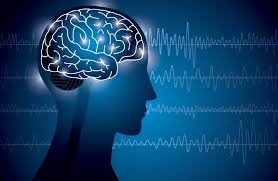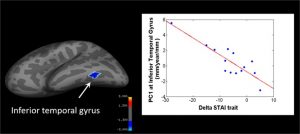Mindfulness Training can Produce Harm but Much can be Avoided
By John M. de Castro, Ph.D.
“meditation was designed not to make us happier, but to radically change our sense of self and perception of the world. Given this, it is perhaps not surprising that some will experience negative effects such as dissociation, anxiety and depression.” – Hackspirit
People begin meditation with the misconception that meditation will help them escape from their problems. Nothing could be further from the truth. In fact, meditation does the exact opposite, forcing the meditator to confront their issues. In meditation, the practitioner tries to quiet the mind. But, in that relaxed quiet state, powerful, highly emotionally charged thoughts and memories are likely to emerge. The strength here is that meditation is a wonderful occasion to begin to deal with these issues. But often the thoughts or memories are overwhelming. At times, professional therapeutic intervention may be needed.
Many practitioners never experience these negative experiences or only experience very mild states. There are, however, few systematic studies of the extent of negative experiences. In general, the research has reported that unwanted (negative) experiences are quite common with meditators, but for the most part, are short-lived and mild. There is, however, a great need for more research into the nature of the experiences that occur during meditation.
In today’s Research News article “Doing no harm in mindfulness-based programs: Conceptual issues and empirical findings.” (See summary below or view the full text of the study at: https://www.ncbi.nlm.nih.gov/pmc/articles/PMC6575147/), Baer and colleagues review what little research there is regarding negative experiences with mindfulness training. They report that negative experiences and harm are relatively common and occur with a variety of physical and psychological therapies, drug treatments, exercise, and also with mindfulness-based practices. Most people practicing meditation have emotional or challenging experiences arise, including troubling thoughts, anxiety, depression, confusion, depersonalization and alienation. These tend to be short-lived and often are thought to be part of the therapeutic process and lead to healthy outcomes. Only a small percentage of participants (1% to 7%) experience severe negative experiences such as psychotic symptoms, disorientation, and depression at a severe enough level to prompt cessation of meditation.
The authors identify three categories of potential sources of adverse events, program factors, participant factors, and teacher/clinician factors. In terms of program factors the most significant appears to be the intensity of the practice with a large percentage of adverse events occurring on retreats. In terms of participant factors, prior psychiatric and/or traumatic issues appear to be risk factors for adverse events. In terms of teacher/clinician factors, it appears that teacher ability and competence is important including “empathy, understanding of the client’s problems, communication about the nature of the program, skillful implementation of the program, managing difficulties that arise, and encouraging adherence to recommended practice.” Harm avoidance emphasizes taking these factors into consideration at the outset and monitoring for participant discomfort with appropriate intervention when needed.
One of the key judgements to be made is the cost/benefit analysis. Mindfulness training produces major physical, psychological, and spiritual benefits and these must be weighed against potential harm. It is generally true that the benefits are substantial and long lasting while the adverse events are mild and short-lived. But for a fraction of participants the harm is so debilitating to make the practice totally ineffective. It is incumbent on mindfulness teachers and clinicians to carefully assess potential risk factors and screen out particularly vulnerable participants and to rigorously monitor participant distress during the training to intervene or stop training when necessary to prevent harm.
“Mindfulness can have negative effects for some people, even if you’re doing it for only 20 minutes a day. It’s difficult to tell how common [negative] experiences are, because mindfulness researchers have failed to measure them, and may even have discouraged participants from reporting them by attributing the blame to them.” – Miguel Farias
CMCS – Center for Mindfulness and Contemplative Studies
This and other Contemplative Studies posts are also available on Google+ https://plus.google.com/106784388191201299496/posts and on Twitter @MindfulResearch
Study Summary
Baer, R., Crane, C., Miller, E., & Kuyken, W. (2019). Doing no harm in mindfulness-based programs: Conceptual issues and empirical findings. Clinical psychology review, 71, 101–114. doi:10.1016/j.cpr.2019.01.001
Abstract
The benefits of empirically supported mindfulness-based programs (MBPs) are well documented, but the potential for harm has not been comprehensively studied. The available literature, although too small for a systematic review, suggests that the question of harm in MBPs needs careful attention. We argue that greater conceptual clarity will facilitate more systematic research and enable interpretation of existing findings. After summarizing how mindfulness, mindfulness practices, and MBPs are defined in the evidence-based context, we examine how harm is understood and studied in related approaches to physical or psychological health and wellbeing, including psychotherapy, pharmacotherapy, and physical exercise. We also review research on harmful effects of meditation in contemplative traditions. These bodies of literature provide helpful parallels for understanding potential harm in MBPs and suggest three interrelated types of factors that may contribute to harm and require further study: program-related factors, participant-related factors, and clinician- or teacher-related factors. We discuss conceptual issues and empirical findings related to these factors and end with recommendations for future research and for protecting participants in MBPs from harm.
https://www.ncbi.nlm.nih.gov/pmc/articles/PMC6575147/






